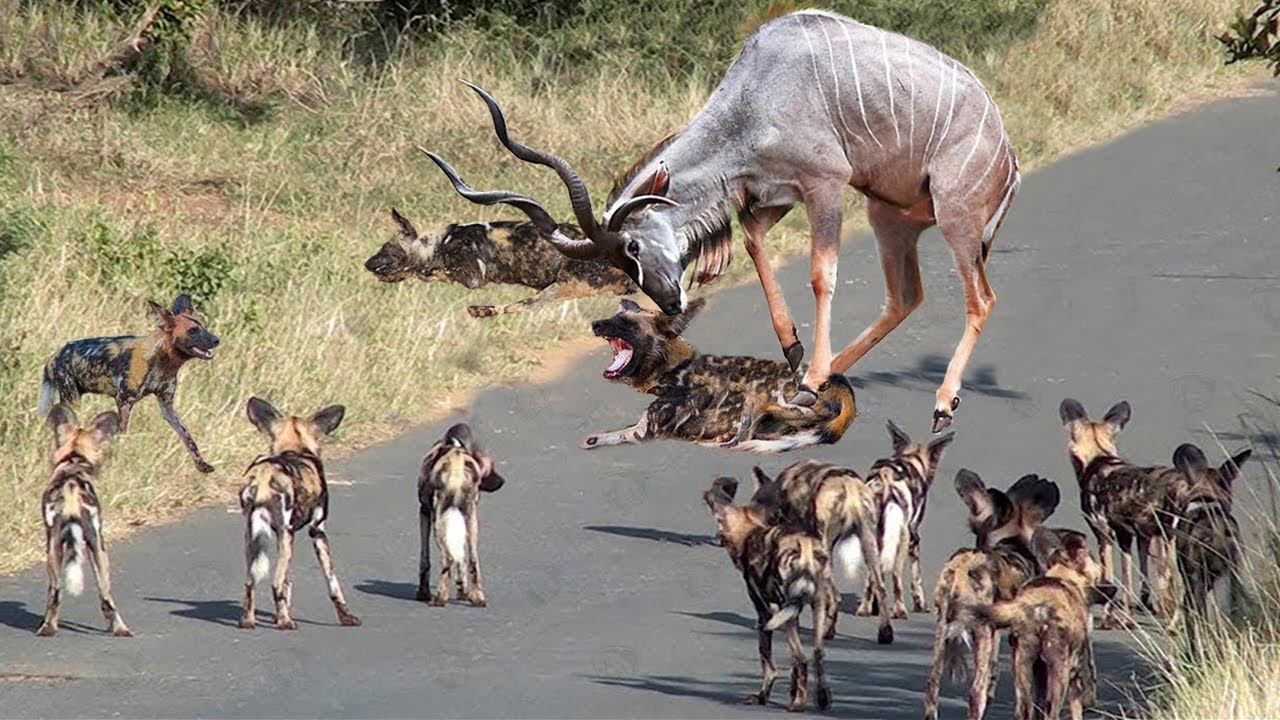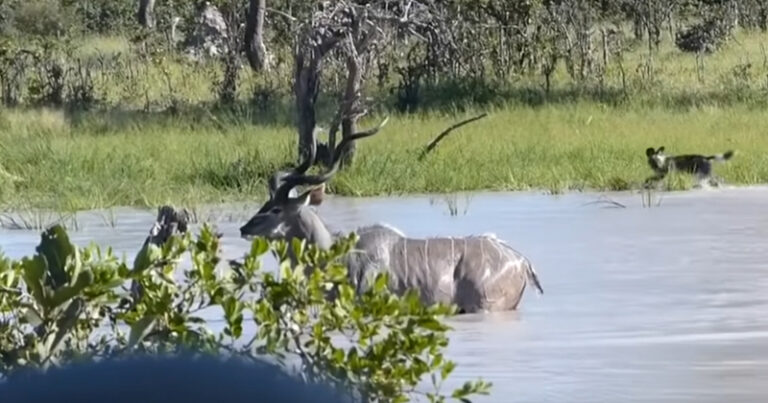In order to find prey, wild dogs are experts at operating in packs. Around dawn or sunset, the dogs engage in a lengthy welcome ritual that includes sniffing and licking, tail-wagging, and vocal twittering. In addition to a range of chattering sounds, they are well known for their sharp Hoo long-distance welcoming call, which can be heard up to four kilometers away. However, during the actual search, they remain silent. They occasionally ʜᴜɴᴛ during full moons.

In the wild, dogs will search the bushes for an antelope herd. This will probably be an Impala. They often prey on the weakest member of the herd, which is either a female or a juvenile antelope, when they come across one.

A subordinate male wild dog will often attempt to separate the prey item from the rest of the herd before beginning the ʜᴜɴᴛ. The alpha male assumes control of the ʜᴜɴᴛ once the target has been located, isolated, and the lethal endurance race has started.

Wild dogs have extraordinary stamina and may run for brief intervals at rates of over 60 km/h or maintain a 40 km/h pace for five kilometers. During the ʜᴜɴᴛ, the pack fragments, and some dogs attempt to chase the fleeing prey in a loop toward the other dogs. Unanticipated things happened as a pack of wild dogs tried to ʜᴜɴᴛ a kudu in the water. Let’s watch the video below to see what happened with kudu and wild dogs: